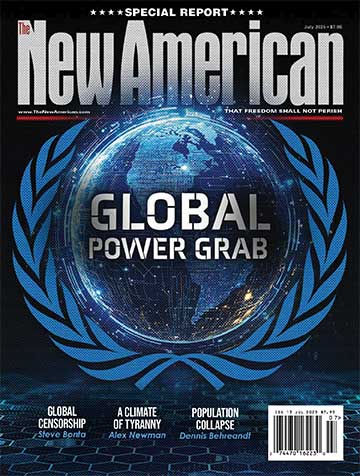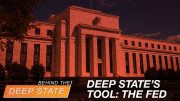
Just a few days before then-President Richard Nixon announced he was “closing the gold window” on August 15, 1971, the British ambassador came to Washington to demand that the U.S. Treasury redeem some $3 billion worth of paper dollars Britain was holding in exchange for gold. With more than $45 billion in Federal Reserve notes outstanding worldwide and only $10 billion in gold to back them up, Nixon called 15 advisors for a secret meeting to decide what to do.
Out of that meeting came Nixon’s announcement:
Prosperity without war [the Vietnam war was winding down] requires action on three fronts: we must create more and better jobs; we must stop the rise in the cost of living; [and] we must protect the dollar from the attacks of international money speculators….
The … indispensable element … [is] to stop the rise in the cost of living….
Homemakers find it harder than ever to balance the family budget. And 80 million American wage earners have been on a treadmill … your paychecks were higher, but you were no better off.
So, Nixon took actions that exacerbated and accelerated the very problem he announced he was solving:
I have directed [Treasury] Secretary [John] Connally to suspend … the convertibility of the dollar into gold.
He soothed any concerns people might have:
If you want to buy a foreign car or take a trip abroad, market conditions may cause your dollar to buy slightly less.
But if you are among the overwhelming majority of Americans who buy American-made products in America, your dollar will be worth just as much tomorrow as it is today.
The effect of this action, in other words, will be to stabilize [the purchasing power of] the dollar.
Investors bought the lie. The next day, the Dow Jones Industrial Average leapt higher, setting a new record for a daily gain.
With that executive order, Nixon set off a chain of events that impacts every American every day.
Toward the end of World War II, representatives from 44 nations met in Bretton Woods, New Hampshire, to craft a new world monetary order. By 1958, the “Bretton Woods” system was fully operational, and pegged all foreign currencies to the American dollar, which itself was pegged to gold at the fixed exchange rate of $35 an ounce.
This gave the U.S Treasury what France’s minister of finance called an “exorbitant privilege”: The Treasury could merely print $100 bills for a fraction of a cent but spend them abroad for $100 worth of real goods and services. The temptation to continue print those $100 bills proved to be irresistible.
When Nixon, by executive order, ended the ability for foreign central banks to redeem paper dollars for gold, he ended the Bretton Woods system, and the world has been reaping the whirlwind ever since.
For example, a $100 bill in 1971 is now worth about $15. Put another way, it takes $654 in today’s money to match the purchasing power of a $100 bill in 1971. Put still another way, the dollar has lost 85 percent of its purchasing power since Nixon closed the gold window.
The consequences of untying that last indirect link between the dollar and gold are accelerating. For one thing, it has temporarily validated MMT — Modern Monetary Theory — which states that a government can spend whatever it wants on whatever it wants without limit. And when inflation rears its ugly head, the Fed can raise interest rates to cool it off.
Going back to the gold standard in today’s political and economic climate is impossible. History shows that the expansion of the money supply will continue until the currency is worthless.
Twenty years before being named head of the U.S. Federal Reserve, Alan Greenspan wrote of the insiders’ antipathy towards the gold standard:
Government deficit spending under a gold standard is severely limited.
The abandonment of the gold standard made it possible for the welfare statists to use the banking system as a means to an unlimited expansion of credit….
The law of supply and demand is not to be conned. As the supply of money … increases relative to the supply of tangible assets in the economy, prices must eventually rise.
Thus, the earnings saved by the productive members of the society lose value in terms of goods….
In the absence of the gold standard, there is no way to protect [dollar-denominated] savings from confiscation through inflation….
The financial policy of the welfare state requires that there be no way for the owners of wealth to protect themselves.
This is the shabby secret of the welfare statists’ tirades against gold. Deficit spending is simply a scheme for the confiscation of wealth. Gold stands in the way of this insidious process. It stands as a protector of property rights.
If one grasps this, one has no difficulty in understanding the statists’ antagonism toward the gold standard.
Greenspan’s conversion from a hard-money advocate to a Keynesian is a topic for another day. Suffice to say, the forces unleashed by Nixon’s executive order 50 years ago this coming Sunday are not only continuing, but gathering momentum.




